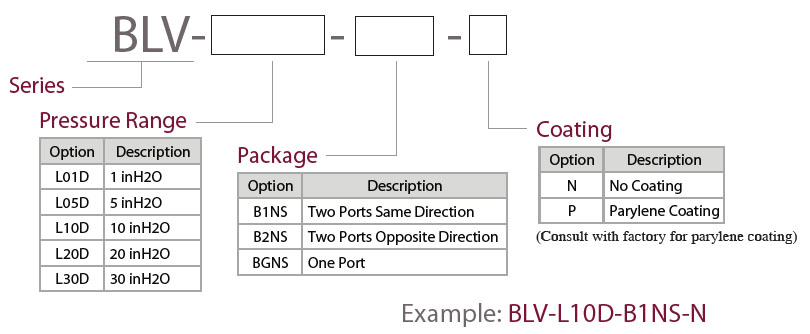
The company All Sensors offers piezoresistive pressure sensors. One product line bears the designation BLV, which is supplemented with further characters depending on the variant. The first block specifies the measuring range. The second block specifies whether the housing has one or two hose connections and in which direction they point. The sensor can also be coated with Parylene, which makes it more robust.
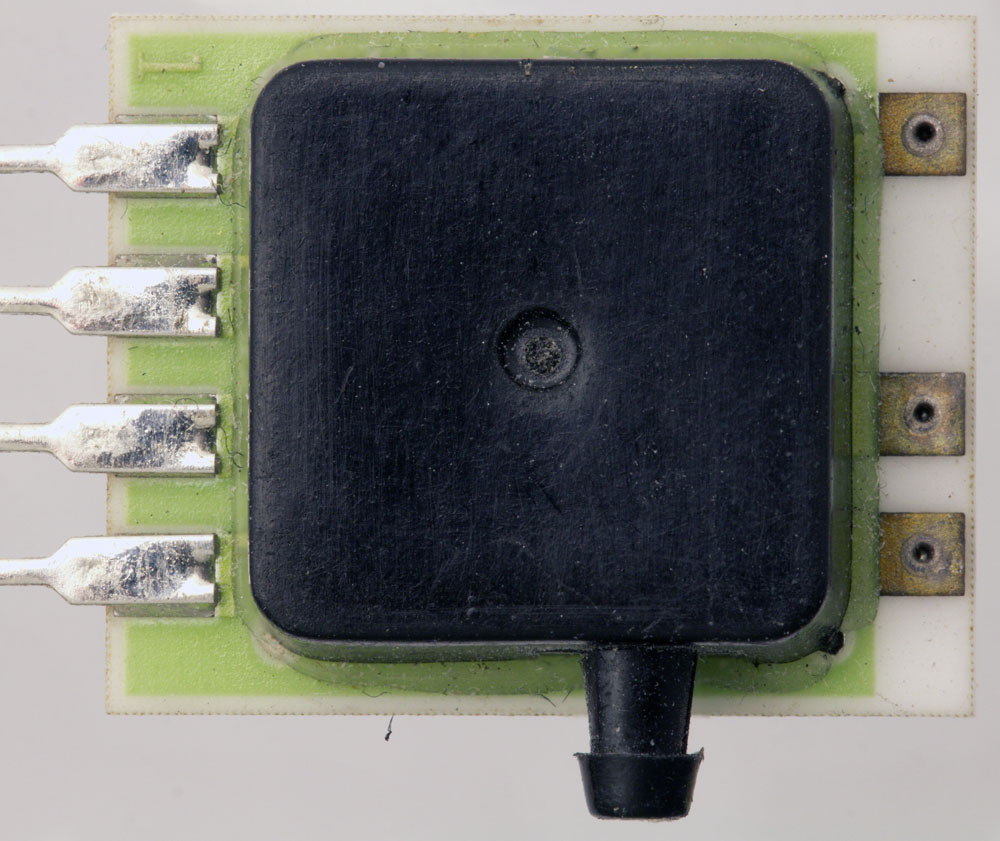
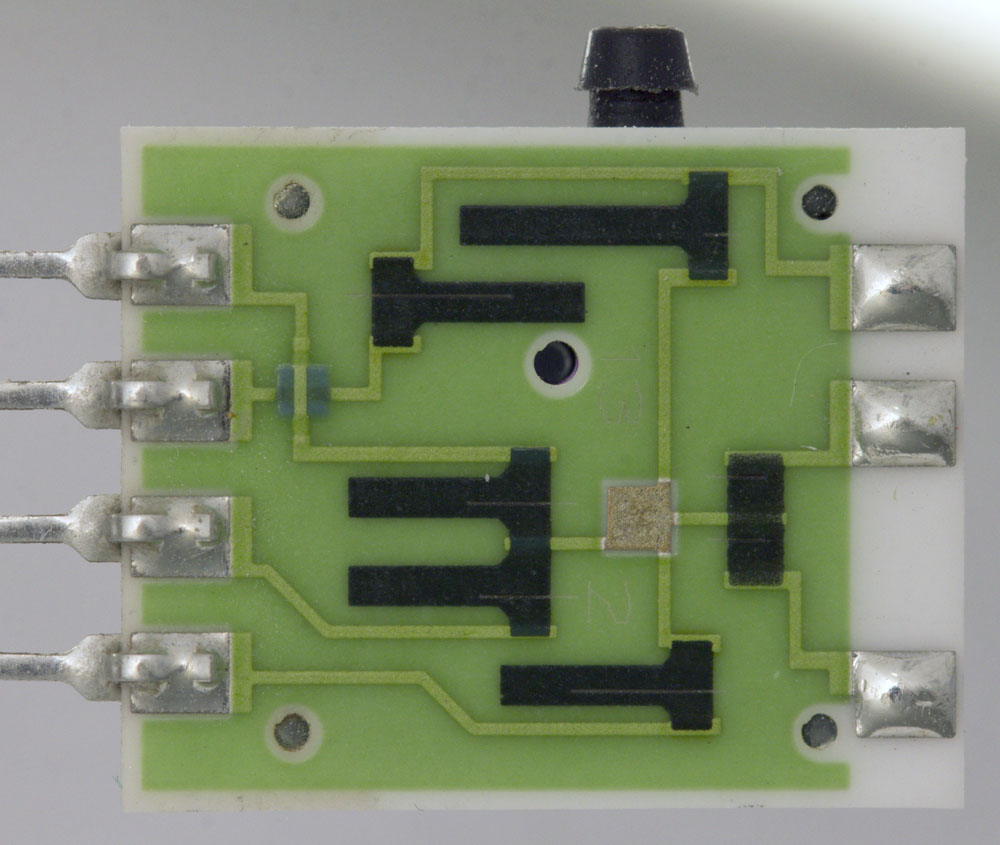
The module presented here has a hose connection on one side. It is based on a ceramic carrier with some tuned resistors on the non-closed side. A testpoint is used for tuning. Four pins are attached to one edge. There are vias on the other edge.
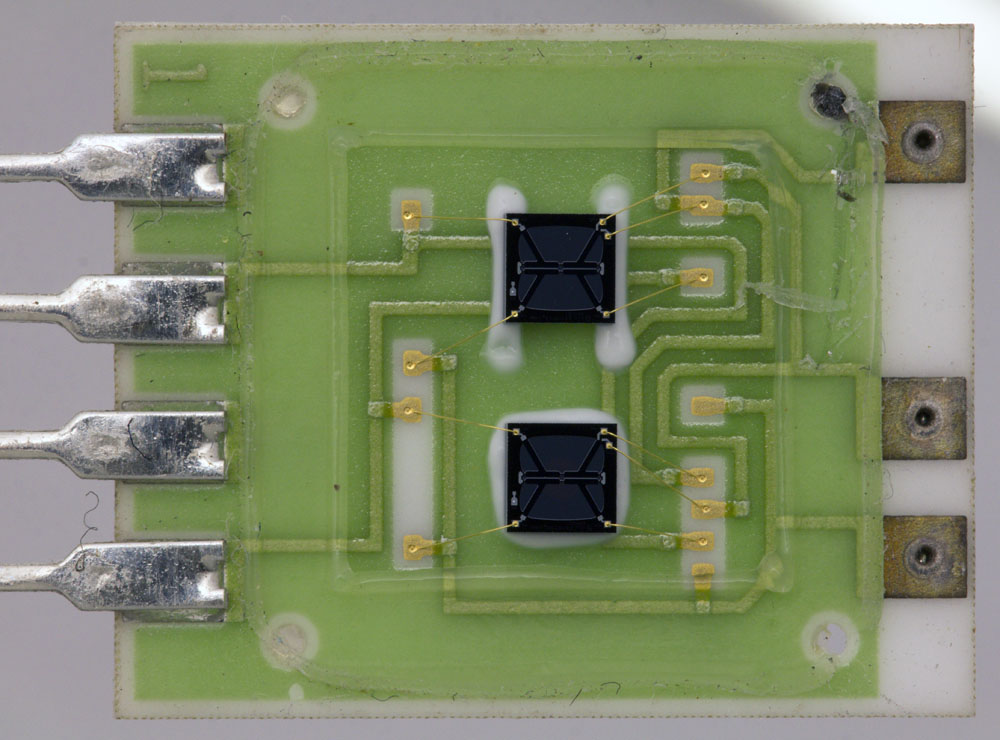
Two MEMS modules are located under the plastic housing.
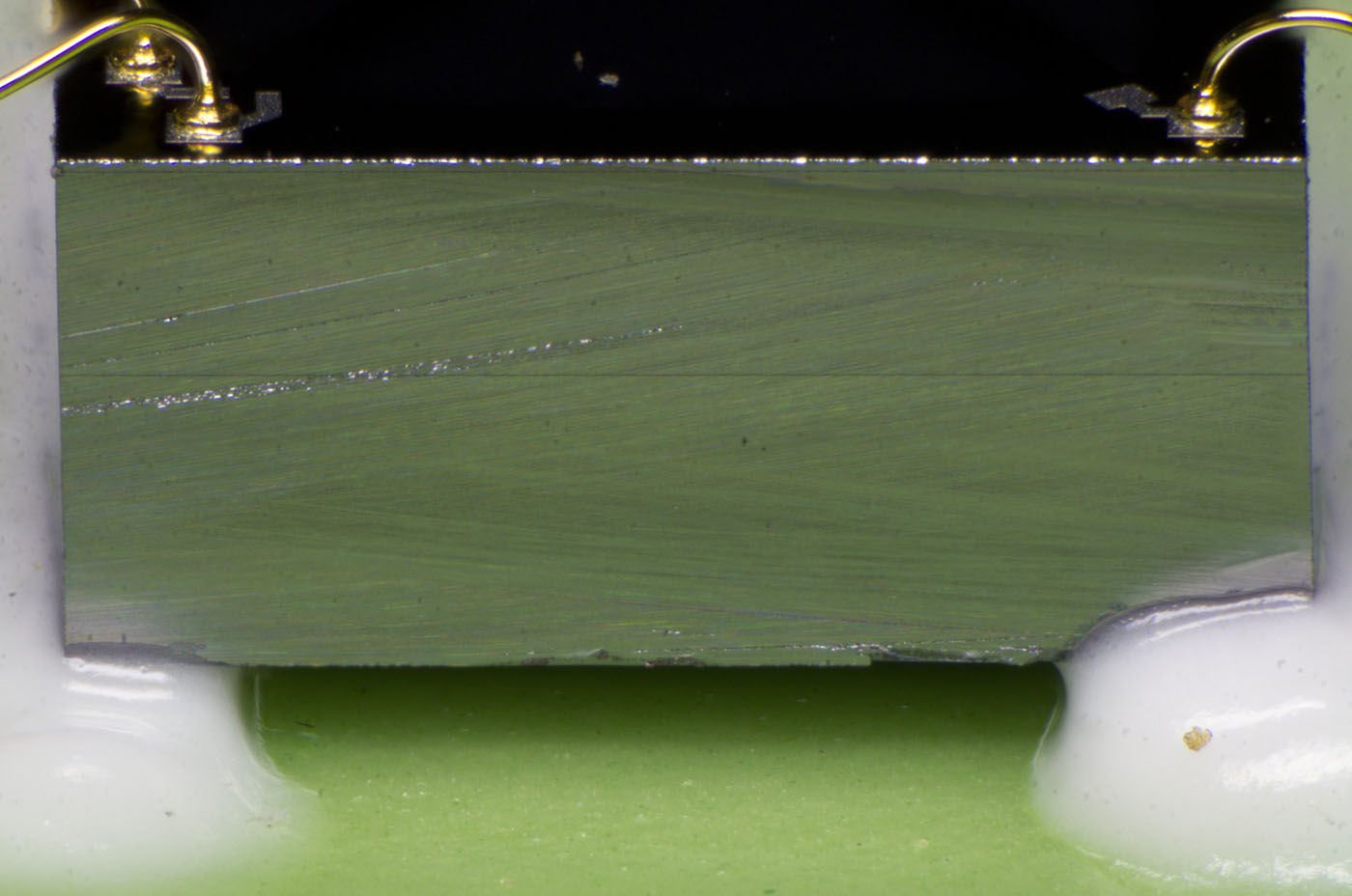
A closer look shows that one MEMS module is glued in such a way that the underside comes into contact with the surrounding atmosphere in the plastic housing. The second module has been glued around its entire circumference. Underneath, there is a hole in the ceramic carrier, which means that the underside of this module comes into contact with the atmosphere surrounding the sensor.
A closer look reveals that the modules are composed of two elements.
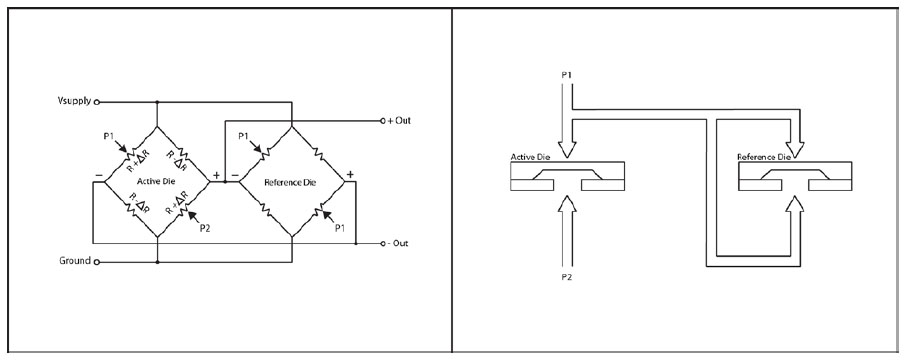
The manufacturer shows on his website how such a pressure sensor works. The configuration of the resistors as a Wheatstone bridge already compensates for many parasitic effects and thus enables an accurate determination of the pressure. Here, the behaviour of the pressure sensor was further improved with a second MEMS module. The second module does not experience any pressure difference and is just used to compensate for parasitic effects.
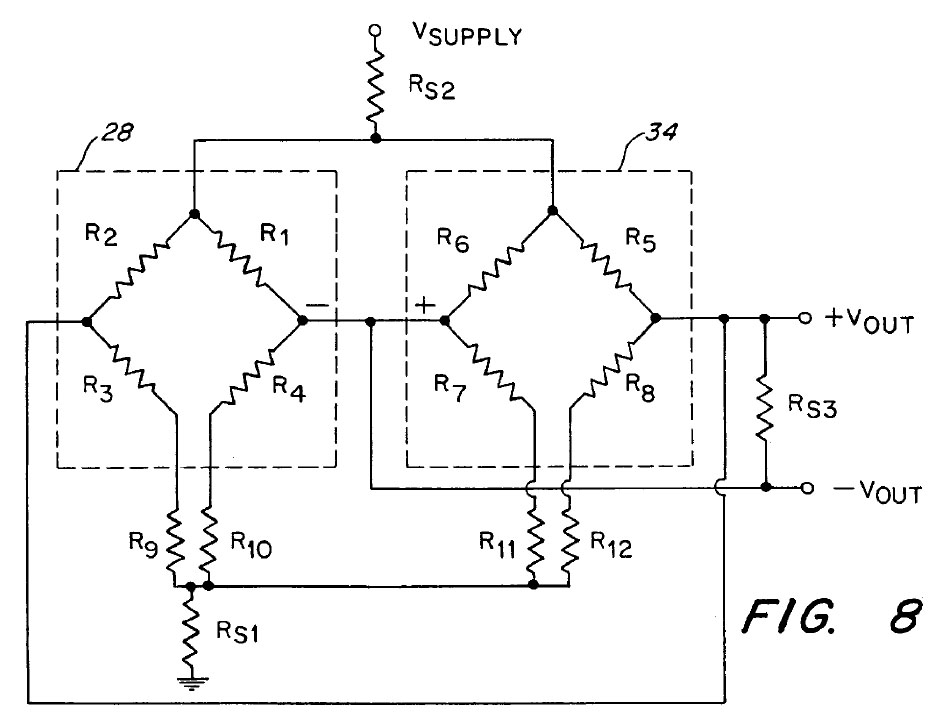
All Sensors refers to patent US6023978A, which belonged to Honeywell. There it shows that the circuitry is somewhat more complex and includes additional resistors.
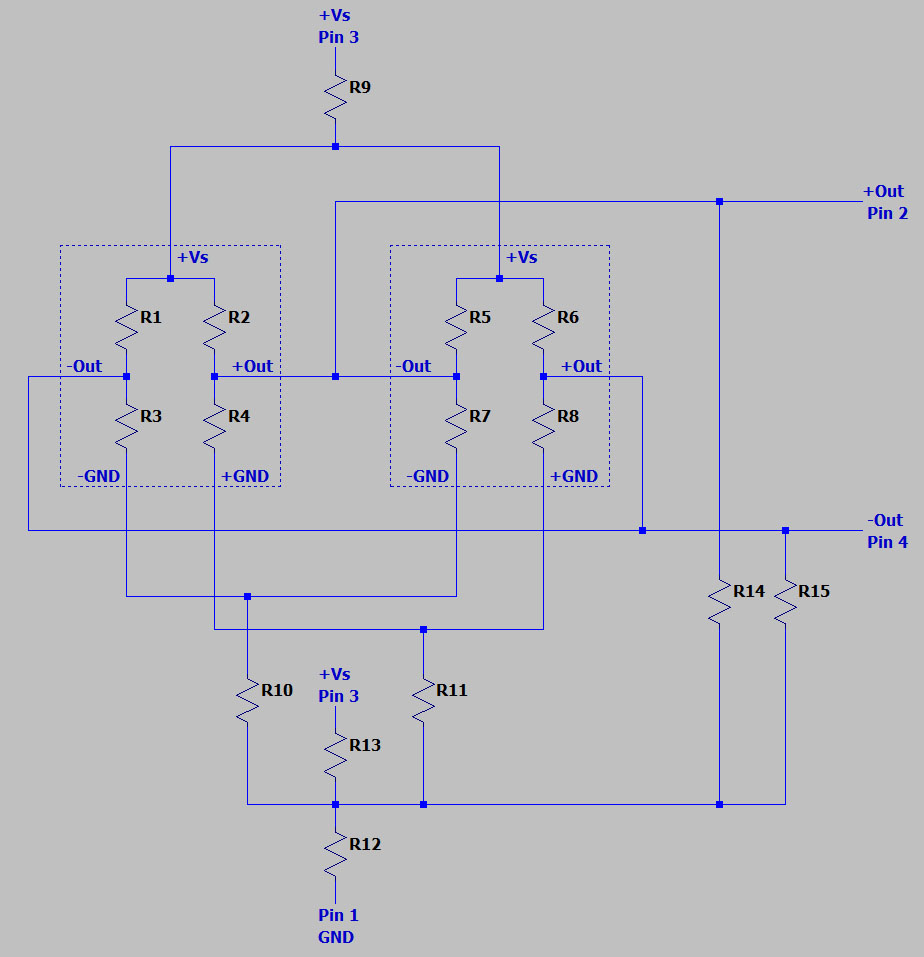
If we analyse the resistors and the wiring on the pressure sensor, it becomes apparent that the wiring here is somewhat more complex than shown in the datasheet. The symmetry of the two modules and the characteristic curve of the pressure sensor are extensively adjusted.
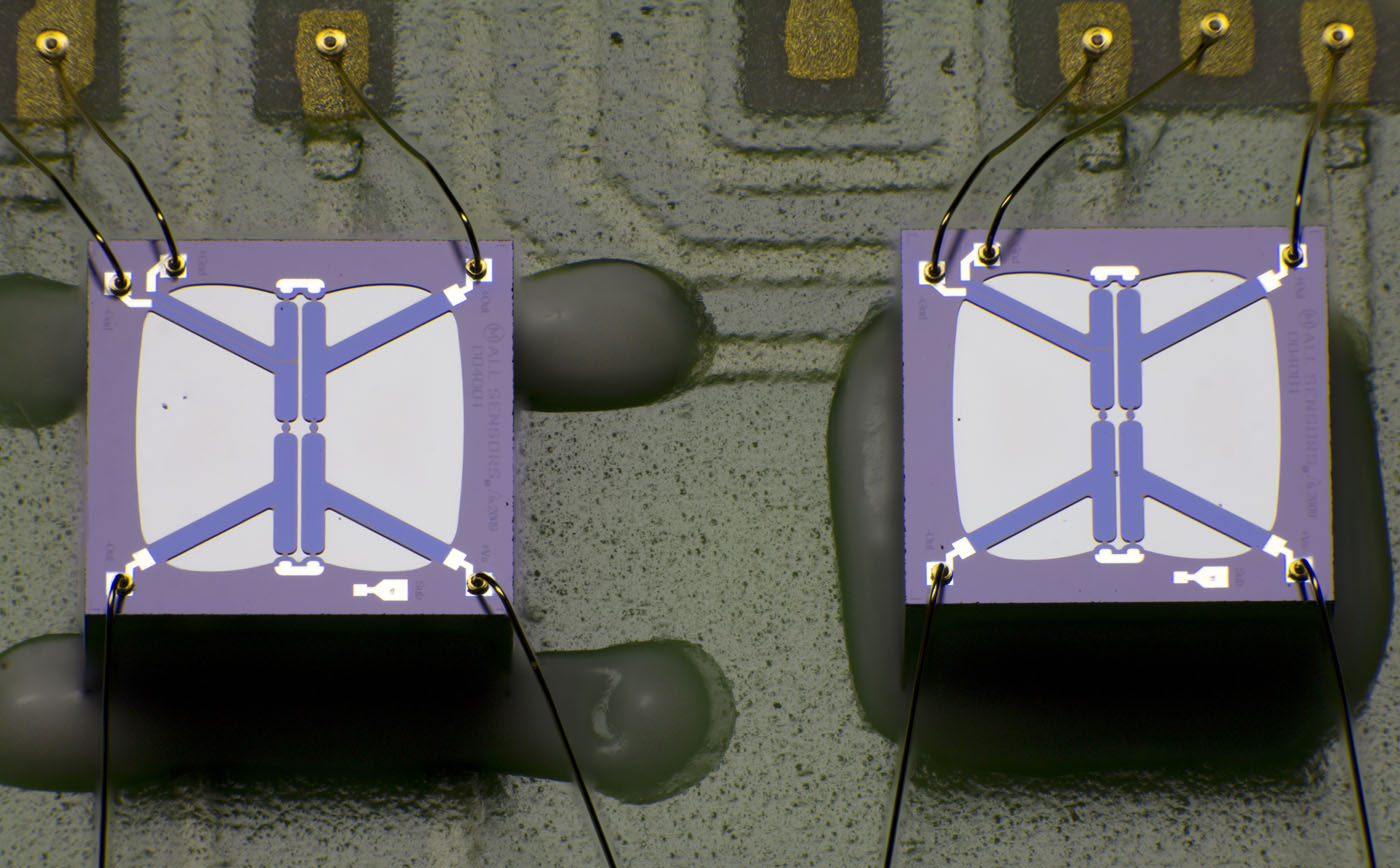
As was to be expected, the two MEMS modules are exactly the same.

The design comes from All Sensors in 2009. DO4DO1 could be an internal designation of the design.
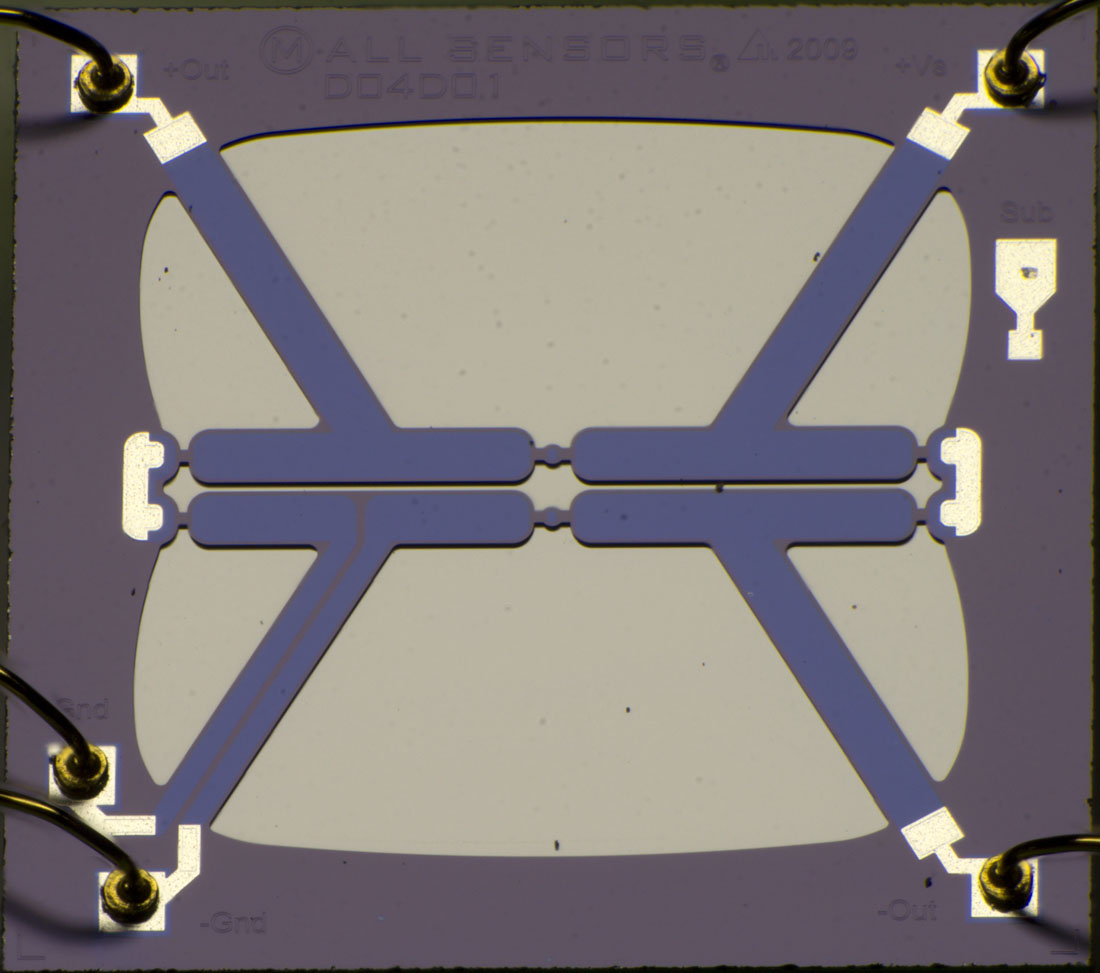
The structures show the symmetry that one would expect from such a module. However, the GND connection is doubled.

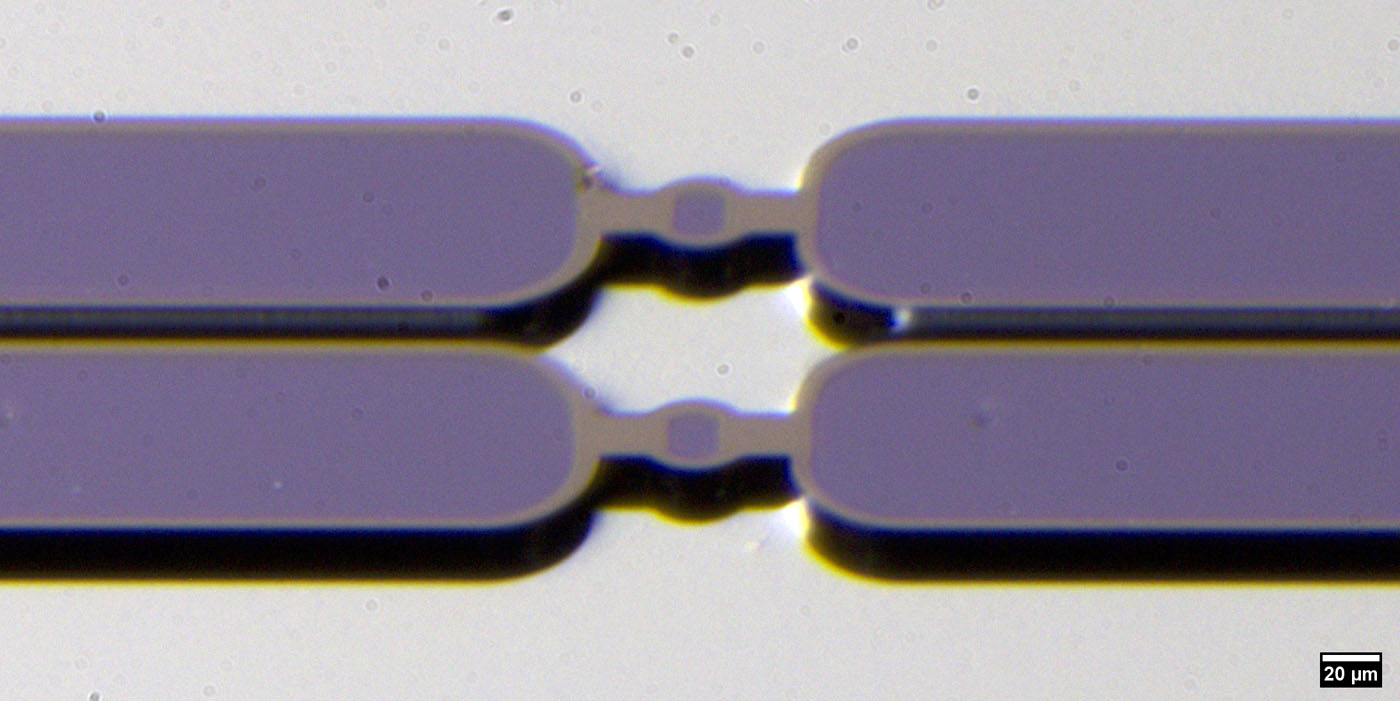
Pressure measurement is based on piezoresistive resistors that change their value when stretched or compressed. The active elements are not immediately visible. The resistors R2 and R3, which realise the pressure measurement, are located in the middle of the surface, which moves up or down depending on the pressure. It seems that the brownish base represents the piezoresistive material, which is accordingly located everywhere. The bluish layer represents the low-resistance lines, under which the influence of the piezoelectric material becomes irrelevant. The resistors R2 and R3 have been divided into two parts.
The resistors R1 and R4, which complete the Wheatstone bridge, are located at the edge of the membrane. The resistors are not only connected via the bluish layer, but also via the metal layer.

If you destroy the membrane, you can see how thin it is. While the height of the piezoresistive layer is roughly estimated at 20µm, the membrane is not even 10µm thick.
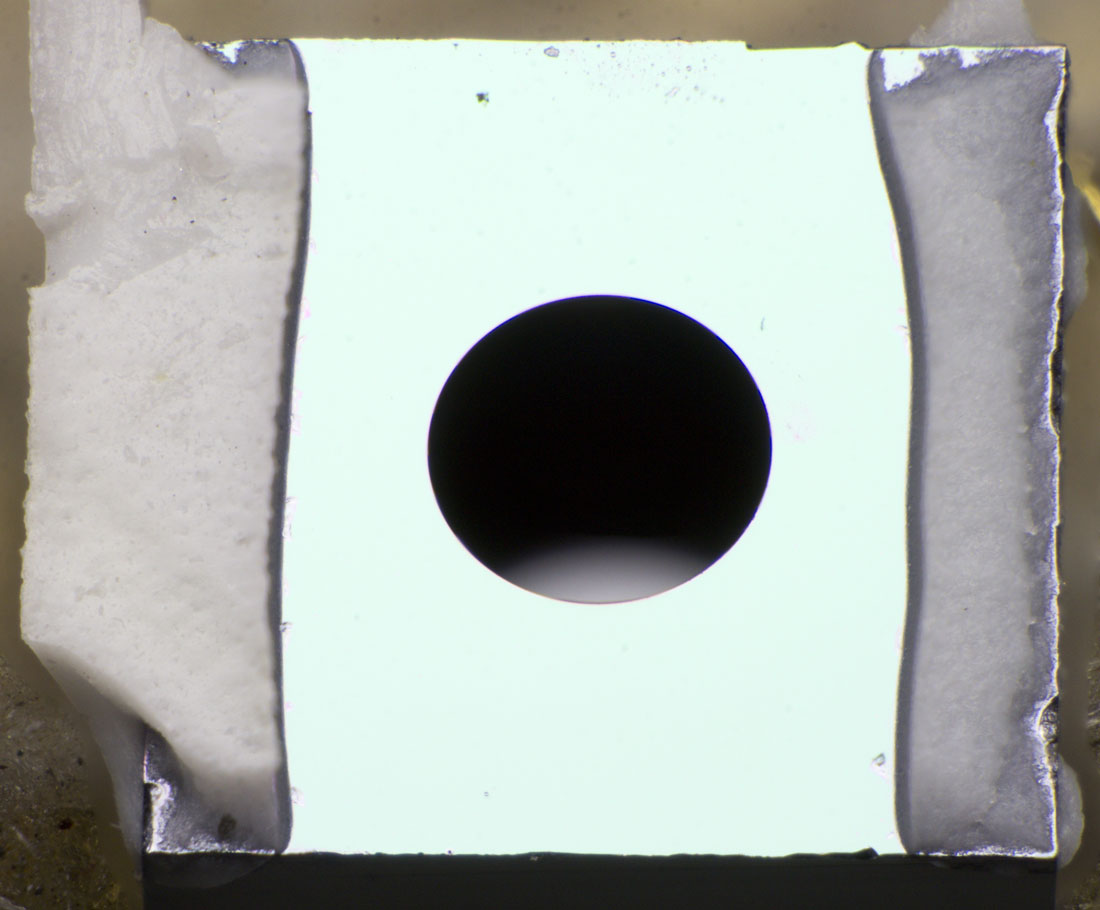
The module has a circular opening on the underside.
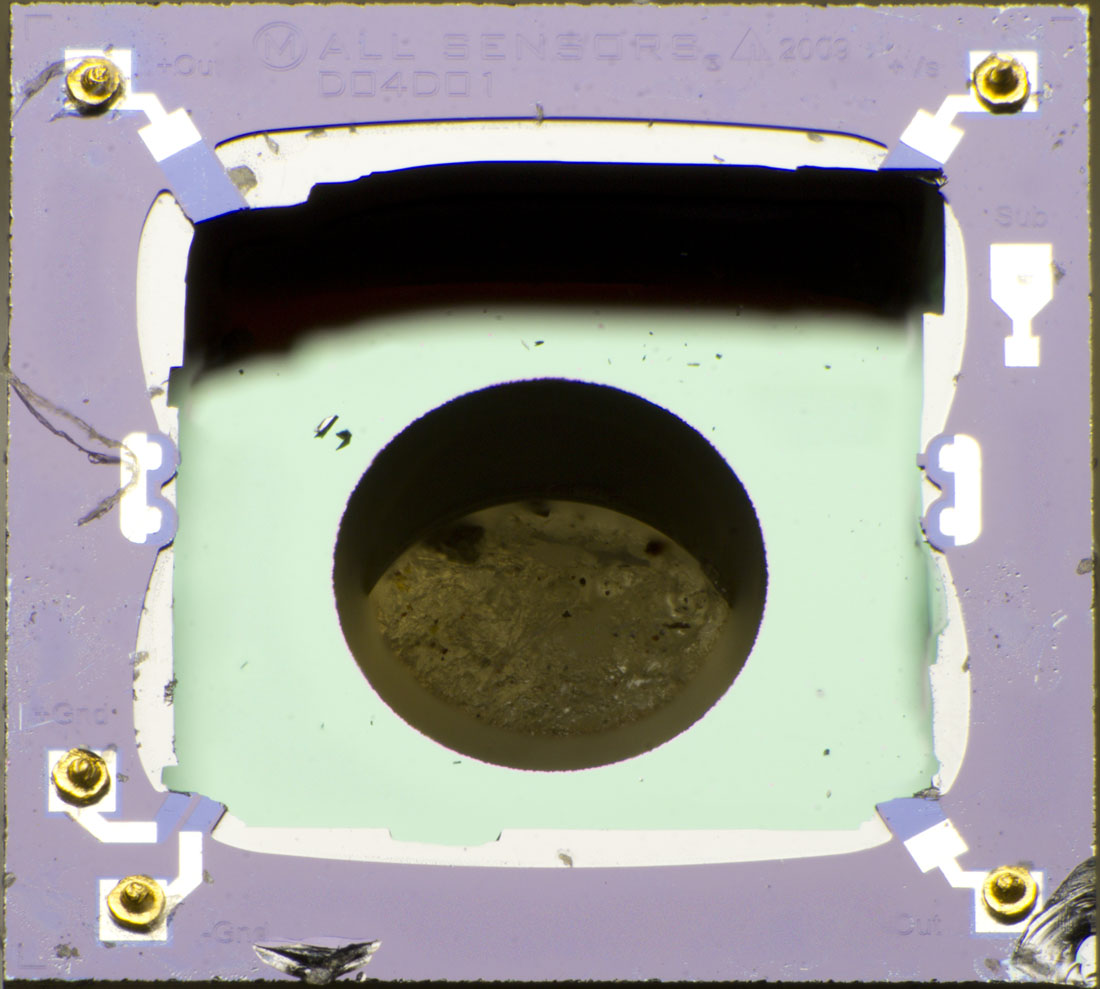
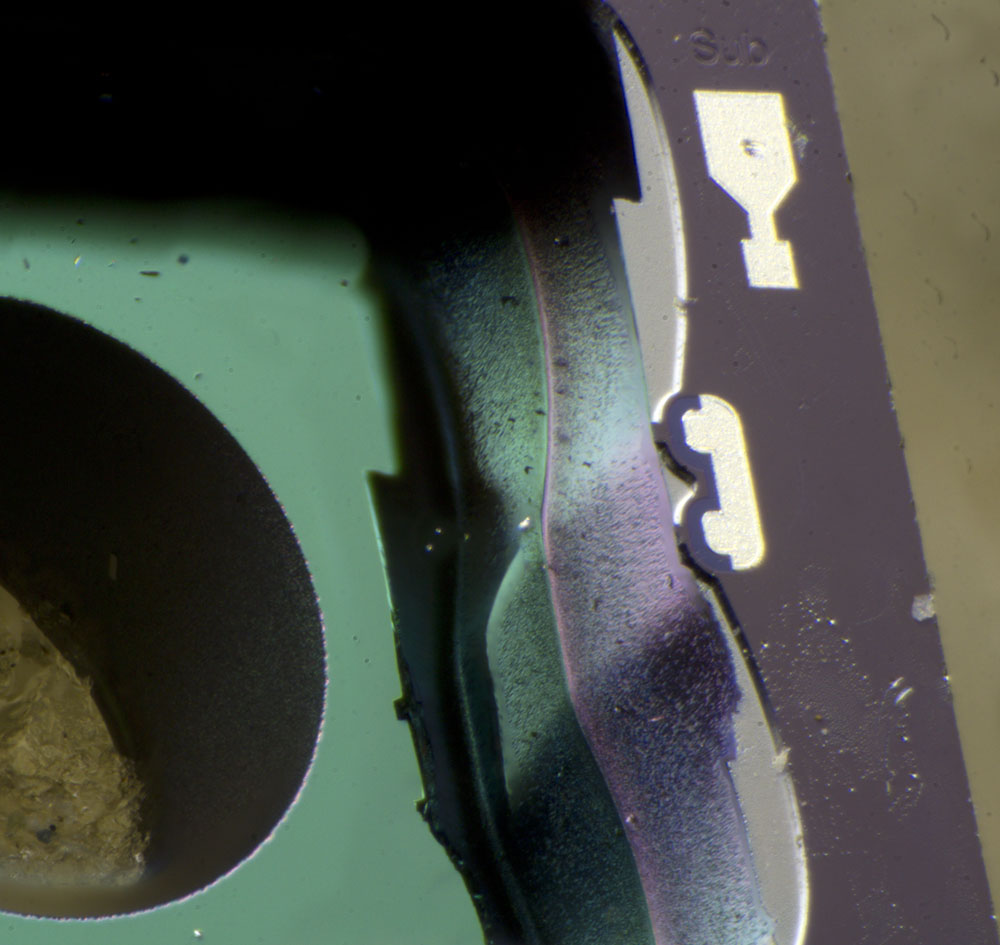
If you remove the membrane completely, you can take a look at the cavity underneath. From the side, it could already be seen that the module consists of two elements. The lower element contains the circular hole, while a larger cavity has been inserted in the upper element.
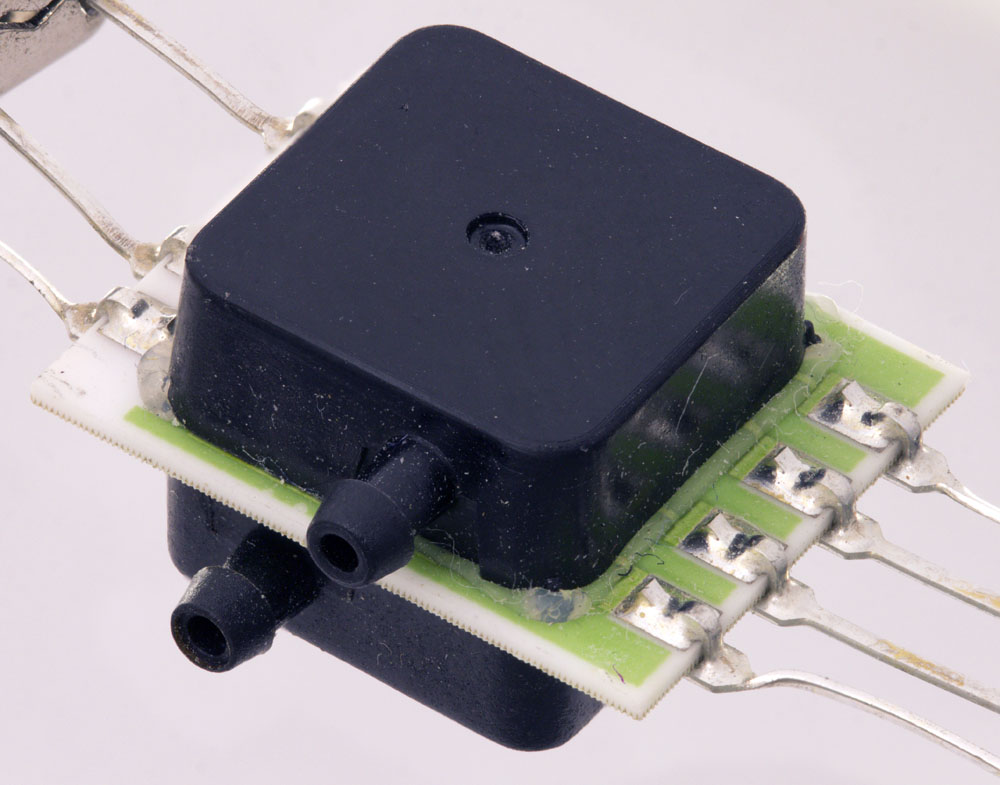
Here you can see an alternative configuration where there is a plastic half-shell with a hose connection on both sides.
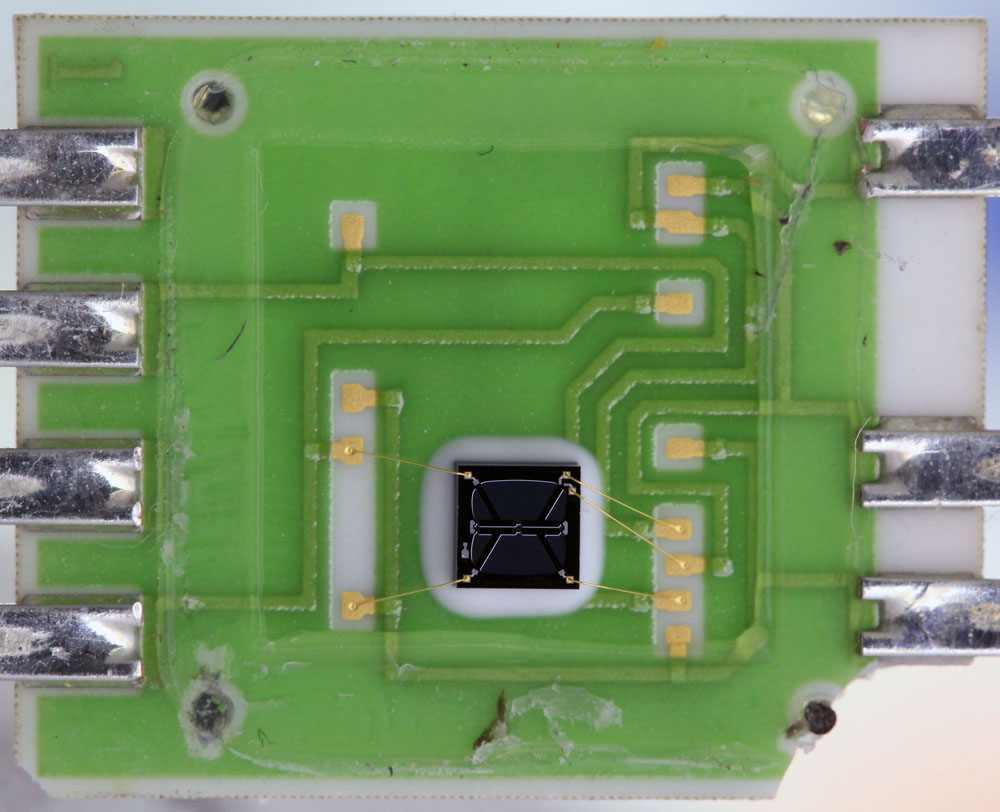
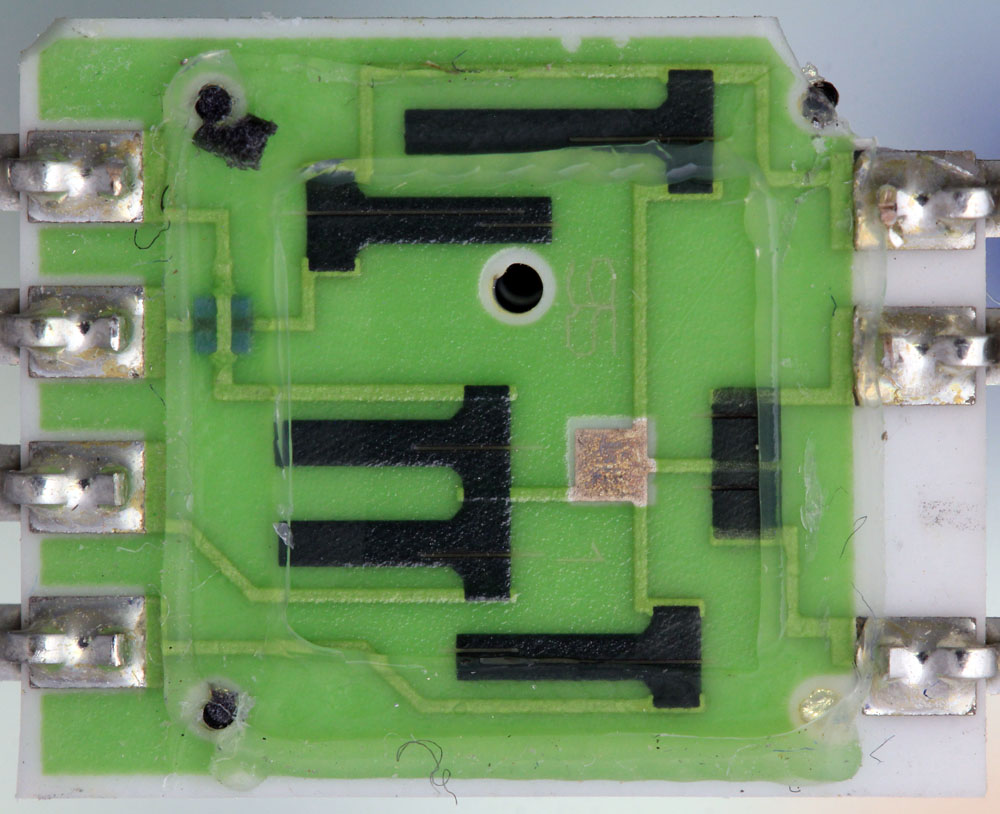
Only one pressure sensor module was used in this component. However, the same ceramic carrier was used as for the first pressure sensor.
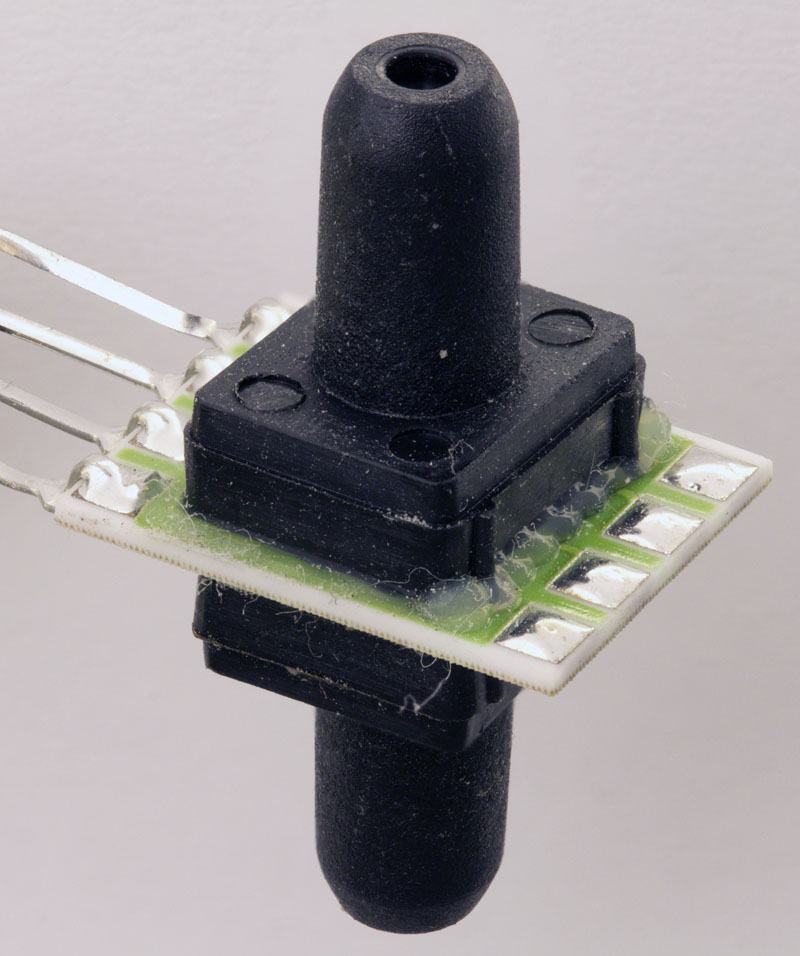
The third pressure sensor variant is somewhat smaller.
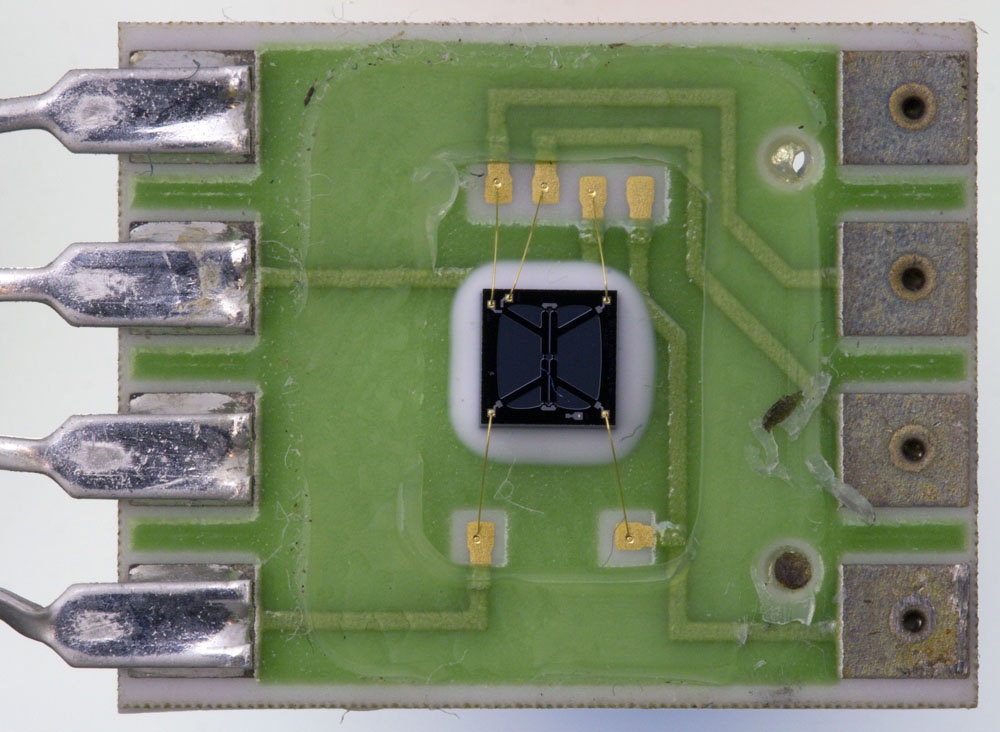
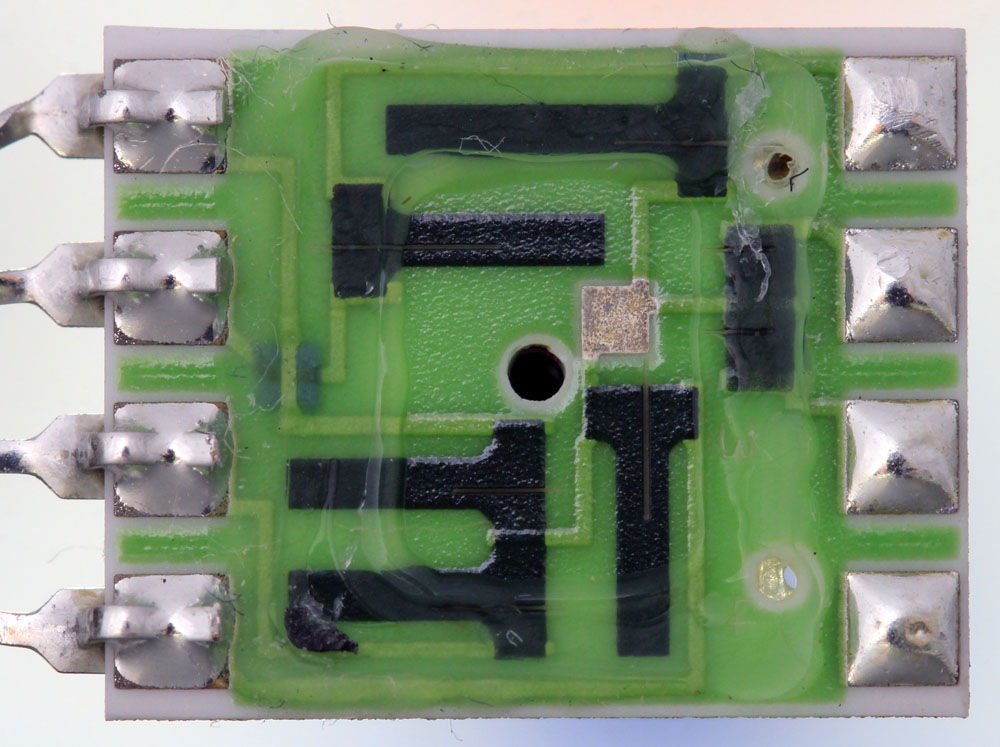
Again, only one sensor module was used.
https://www.richis-lab.de/MEMS_11.htm 